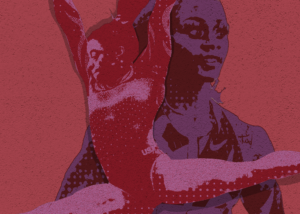On the morning of February 4, the audience in Beijing’s Capital Indoor Stadium, though limited by COVID-19 capacity restrictions, was rapt. It was the first day of figure skating competition in the 2022 Olympic games, and fans hoped they would be historic. They weren’t disappointed; from the Russian women’s daring programs to Nathan Chen’s crowd-pleasing gold medal skates, there was a lot for the history books. But much of what went on under the surface—the background considerations rooted in years of figure skating debate—was unknown to even those in-person in the stands.
When the decision to switch to a new judging system was made in 2004 in response to the 2002 Winter Olympics judging scandal over subjective score fixing, not everyone was on board. This new system, many argued, had gone too far in removing subjectivity and would incentivize skaters to focus on landing the most technically difficult jumps possible rather than the level of artistry and grace characteristic of the sport. The years since the change have, in many ways, borne out this concern, but this year’s Olympics prove the tug-of-war between athleticism and artistry in figure skating is not a zero-sum game.
It’s not hard to see why one might worry that the current scoring system—the International Judging System (IJS)—would prize technical skill above all else; the system is more formulaic, with how each element (i.e. jump, spin, or footwork sequence) and, by extension, the program, is scored, largely determined by that element’s difficulty. Under IJS, each element is assigned a base value dependent on difficulty, on top of which a Grade Of Execution (GOE), ranging from -5 to +5, is added based on how well the skater executed the element. In addition to the sum of element scores, a program’s final score will include some number of points between 0.25 and 10 for the component score, which is based on overall presentation. Thus, to craft a winning program, a skater doesn’t just need to skate well but also work out the math.
Concerns about the overemphasis of technical ability seem validated when considering the importance of highly difficult jumps—generally the elements with the highest base scores—in this year’s Olympic games. In both the men’s and women’s events, jumps took center stage for the competitors, especially those jumps that push the bounds of what is possible. American skater and 2022 gold medalist Nathan Chen’s world-record-breaking short program was largely achieved off the back of both the number and the beauty of quads, jumps in which a skater rotates four, or four and a half, times before landing–unsurprising, perhaps, for a skater dubbed the ‘Quad King’ in 2017 after becoming the first to land five different quadruple jumps in competition. For women, quads were equally hard to ignore, with Russia’s Alexandra Trusova placing second as a result of her five-quad program just days after her teammate, Kamila Valieva, became the first woman to land a quad in Olympic competition.
And jumps didn’t just make the competition, they also broke it; though American skater Jason Brown was able to complete his freeskate with a positive GOE on every element (a feat that even Chen didn’t accomplish), he only managed to place 6th due to the lack of quads in both his short program and freeskate performance. Similarly, Japanese defending two-time champion, not to mention fan favorite, Yuzuru Hanyu’s underperformance to 4th place was based largely on an aborted jump, which he claims was due to a hole in the ice.
But, if there’s one thing this year’s Olympics prove, it’s that the immense influence of high-scoring technical skills, like difficult jumps, doesn’t have to overpower artistry and grace in a performance. These games saw no shortage of beautiful, artistically choreographed moments replete with technical complexity sure to satisfy viewers from any side of the athleticism/artistry debate. Japanese skater Wakaba Higuchi, who placed fifth in the women’s singles event overall, skated an exquisite program to a medley from The Lion King, ending with a truly joyous minute-long step sequence full of style and excitement. The step sequence in Nathan Chen’s free skate to an Elton John medley (which got him a congratulations from Elton John himself) was similarly stylish, combining hip hop with more common moves from the relatively traditional world of figure skating, creating choreography artistically unlike anything the sport has seen before. Unlike in the year’s more exclusively technically-oriented programs, whose skaters seemed driven and focused but not like they were having any fun, throughout both of these skates, pronounced smiles were visible on the skaters’ faces.
Not only does artistry have a place in modern figure skating as an additional flourish on technically difficult programs, but the women’s podium also illustrates that style can even beat high base element scores. In a competition that generally suggested the future of women’s figure skating lies in the quad, Japanese bronze medalist Kaori Sakamoto featured no quads in either of her programs, nor did she include any triple axels, the most difficult of the triple jumps. In spite of this fact, the beauty and artistry with which she skated helped her edge out Russian favorite Kamila Valieva, who didn’t make the podium despite a program including multiple quads (though Valieva’s score might have had to do more with errors in her skate, or potential relation to the scandal surrounding detection of prohibited drugs in her system at a previous competition). And the gold medal winner, Russia’s Anna Shcherbakova, similarly achieved her ranking on the strength of a component score that boosted her ahead of Trusova’s daunting five-quad free skate, which featured higher base element scores but little in the way of artistry.
Since the switch to IJS and the growing tendency for programs at the highest level to focus on athleticism and landing ever more challenging jumps than in the past, it was no surprise that many fans of the sport—both in the stadium and watching from their homes around the world—were more concerned with the seemingly impossible new jumps being landed than with the stylistic elements of the skates. But whether they were there for the mind-boggling jumps or the beauty of an expressive, emotional skate, it was clear there was something for each of the thousands of fans who had made their way to Beijing to watch the greatest skaters in the world compete. It’s undeniable that jumps have taken the foreground in the figure skating of the 21st century, but, as the Beijing 2022 Olympics show, that doesn’t have to stop skating from being artistic, intricate, and all-around fun to watch.





his freeskate with a positive GOE on every element (a feat that even Chen didn’t accomplish) … Why are you lying? Chen did have positive GOEs on all elements in both programs.
My mistake on the unclear wording! I was referring to his downgraded flip in his final quad combo (4T +1EU +1F, but planned as 4T +1EU +3F), but you’re right that the jumping pass overall did receive a positive GOE. Thank you for bringing this to my attention (though I think perhaps you’ll find that “lying” is not quite an accurate description of the situation).
Four and a half rotation jump only works on a quad axel, the other five quads have 4 rotations. The quads Nathan jumped has all the quads except for 4A, so I don’t think saying him achieving 4 and a half rotation jumps is fair for him, as overrotation are considered an error.